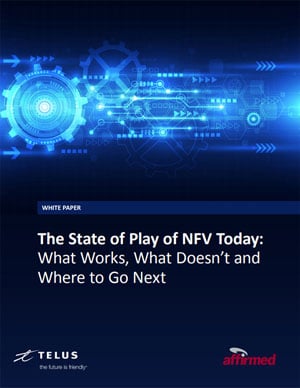White Paper
The State of Play of NFV Today
What Works, What Doesn’t and Where to Go Next
In just the last five years, Network Functions Virtualization (NFV) has gained remarkable traction in an industry (telecommunications). AT&T, Verizon, BT, Deutsche Telekom, Sprint and many other communications service providers have already made significant commitments to NFV initiatives as they embark on the next phase of their network’s journey to 5G. Yet the rapid rise of NFV has come out at the cost of standardized approaches and well-defined strategies among network equipment vendors. Many of the so-called NFV solutions on the market today are, in fact, little more than legacy software loaded onto virtual machines.
Not surprisingly, service providers have experienced very different results from their NFV efforts. Some have seen modest capex cost reduction, but no significant change in revenue streams. Others have seen a transformative effect in their networks as NFV becomes the catalyst for service innovation. Because network equipment vendors tend to define NFV based on their own solutions, some have narrowed the definition to virtualized network functions (VNFs) of existing network nodes such as firewalls, gateways and session border controllers. These VNFs can reduce capex costs, but deliver little in terms of opex reduction and new service creation.
The real benefits of NFV are much broader than a simple capex play, including:
• Dramatic reduction in opex costs through centralization and automation;
• Reduced time-to-market;
• A “fail fast” approach to new service creation;
• Exceptional scalability combined with cost efficiency;
• Support for 5G capabilities including cloud services, network slicing and Internet of Things (IoT) applications. Read More...

